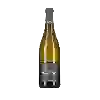
Domaine Pique-BasseLa Brusquembille
This wine generally goes well with beef, lamb or mature and hard cheese.
Food and wine pairings with La Brusquembille
Pairings that work perfectly with La Brusquembille
Original food and wine pairings with La Brusquembille
The La Brusquembille of Domaine Pique-Basse matches generally quite well with dishes of beef, lamb or spicy food such as recipes of small stuffed fish from nice, moroccan style leg of lamb or caramel pork.
Details and technical informations about Domaine Pique-Basse's La Brusquembille.
Discover the grape variety: Galotta
Intraspecific cross between ancellotta and gamay à jus blanc obtained in 1981 at the Agroscope Research Station in Pully (Switzerland).
Last vintages of this wine
The best vintages of La Brusquembille from Domaine Pique-Basse are 2017, 2016, 2015
Informations about the Domaine Pique-Basse
The Domaine Pique-Basse is one of of the world's greatest estates. It offers 11 wines for sale in the of Vaucluse to come and discover on site or to buy online.
The wine region of Vaucluse
The wine region of Vaucluse is located in the region of Méditerranée of Vin de Pays of France. Wineries and vineyards like the Domaine Chêne Bleu or the Domaine Chêne Bleu produce mainly wines red, white and pink. The most planted grape varieties in the region of Vaucluse are Viognier, Merlot and Cabernet-Sauvignon, they are then used in wines in blends or as a single variety. On the nose of Vaucluse often reveals types of flavors of earthy, blueberry or dried herbs and sometimes also flavors of savory, anise or cinnamon.
The wine region of Méditerranée
Méditérranée is a PGI title that covers wines produced in a large area of the South-eastern coast of France, roughly corresponding to the wine region of Provence but also including Part of the Rhône Valley. The PGI shares its territory with multiple AOC appellations as varied as Châteauneuf-du-Pape, Bandol and Côtes de Provence. The PGI Méditérranée catchment area extends over 10 departments (including the two on the island of Corsica), as well as smaller parts of the Isère, Loire and Rhône departments. Viticulture is essential to the culture and economy of this part of France.
The word of the wine: Length
Persistence in the mouth of a wine measured in caudalies.














